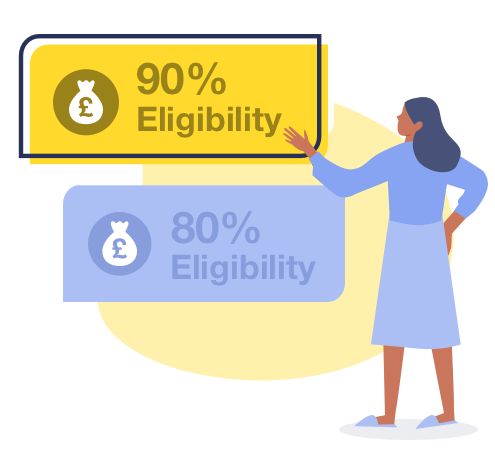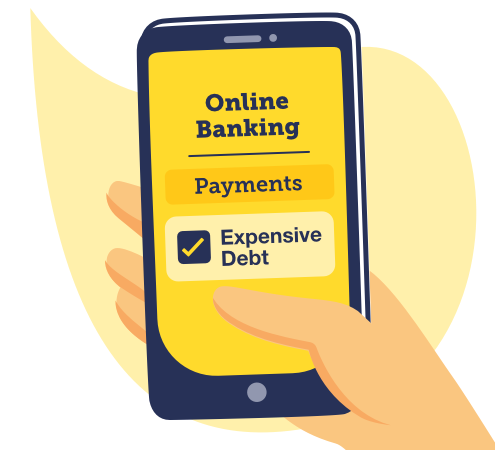Martin's masterclass: Cards, loans, BNPL, overdrafts
How to borrow at 0%, ie, NO COST (or as close to it as possible)
Debt is like fire. It's a useful tool, but get it wrong & it burns
 Borrowing is dirt cheap right now, with the cheapest ever loan rates, the longest 0% spending card we've seen since mid 2020, and many more best buys.
Borrowing is dirt cheap right now, with the cheapest ever loan rates, the longest 0% spending card we've seen since mid 2020, and many more best buys.
Yet a UK interest rate rise is still on the cards - and while that wouldn't hit these products as directly as mortgages (for help on that, see my recent 8 urgent mortgage need-to-knows), it will still have an impact.
So this is a timely note, though writing about new borrowing is always tricky. For some it is necessary and needed, so I want to help you do it the cheapest and safest way. Yet my worry is that may encourage others to borrow who shouldn't. So let me start by saying...
Don't borrow unless you NEED to. Ensure it's a planned purchase, with budgeted for, affordable repayments. Borrow the minimum needed and repay as fast as you can. If in doubt... don't!
The key to borrowing is, of course, to get the lowest interest rate possible. This means more of your repayments clear the actual debt rather than cover the interest, so you're debt-free quicker (though if your existing debt panics you, don't borrow more, instead jump to the debt help section). Now on to the practicals.
Best used for borrowing £100 to, at a stretch, £5,000. Done right, 0% credit cards offer super-cheap borrowing, as there is NO COST WHATSOEVER for up to nearly two years. To use this route, you need to be able to pay for what you need to borrow on the card (eg, replacing a broken fridge or washing machine).
✔️ Pros: Interest-free for a decent time | Gives valuable legal Section 75 protection - so the card provider is jointly liable for purchases | Regulated - so you can complain to the ombudsman if you've problems | You can check eligibility without applying
❌ Cons: Easy to overspend and overborrow | Repayments aren't fixed, so easy to underpay | Not everyone can get one
The current top deals: What really counts is what you'll be accepted for, so ALWAYS first use our 0% eligibility calculator to find which cards you're most likely to get.
The current clear top pick is M&S Bank's 22mths 0%*, which gives accepted newbies the full 22mths, and if spending £100+ in the first 90 days (likely if you're using it for borrowing) you get £25 cashback on top of the usual reward points. So if the eligibility calculator shows you've a good chance of being accepted, it's a plum pick.
The Tesco Bank 'up to' 23mths 0% card* is slightly longer, but not all accepted applicants get the full 0% length and there's no cashback - though there are Clubcard points on spending.
Key rules: Credit cards take discipline not to overspend on. So only do planned borrowing on these cards, then don't use them for anything else. If you don't trust yourself, put the card in a bag in a bowl of water and put it in your freezer, so you need smash the ice to get it out.
The 0% is only for spending on the card, not for withdrawing cash, so avoid that. Ensure you plan your repayments to clear the debt before the 0% ends or it jumps to the 21%+ representative APR. The best way to do this is to set up a direct debit to repay a fixed amount like a loan.
Full info and more top picks in Top 0% cards (APR examples).
 Quick tip: Don't confuse these with 0% balance transfer cards. These cards have 0% purchase deals designed for new borrowing. Don't get them confused with 0% balance transfers designed for you to shift existing credit and store card debt to at a lower rate (though if that's what you need, they're the cheapest route). Quick tip: Don't confuse these with 0% balance transfer cards. These cards have 0% purchase deals designed for new borrowing. Don't get them confused with 0% balance transfers designed for you to shift existing credit and store card debt to at a lower rate (though if that's what you need, they're the cheapest route). |
Best used for borrowing £3,000 - £25,000. This is your prime route for bigger borrowing. While a card might be good to use to replace a broken fridge, a loan is a better option if you must replace a whole kitchen.
Sadly there's no way to do this at 0%. You will pay interest, therefore there is a real cost, so think carefully before you embark. Though rates are historically cheap right now.
✔️ Pros: Allows bigger borrowing & longer to repay | Fixed repayments - good for those who lack self-discipline | You can check eligibility without applying | Regulated - so you can complain to the ombudsman if you've problems
❌ Cons: Allows bigger borrowing & longer to repay (a curse as well as a blessing) | Not interest-free | No Section 75 protection | Not everyone can get one
 Quick tip: The bigger the loan, the more important your income is. While you may have a good acceptance chance at £3,000, the same lender may be unlikely to lend you £10,000. That's why it's important to first use our loans eligibility calculator that shows which lenders are most likely to accept you at each amount. Quick tip: The bigger the loan, the more important your income is. While you may have a good acceptance chance at £3,000, the same lender may be unlikely to lend you £10,000. That's why it's important to first use our loans eligibility calculator that shows which lenders are most likely to accept you at each amount.
So you should almost always try to minimise both the amount you borrow and the term (ie, repay as quickly as possible), though occasionally there is a quirky loophole. |
The current top deals (all are representative APRs): Though often 0% card loans are cheaper for sub-£5k repaid in under 18mths.
- £1,000 - £3,000: Hitachi* 9.8%
- £3,000 - £4,999: Hitachi* 8.1%, AA*, Post Office*, MBNA* 8.3%
- £5,000 - £7,499: Sainsbury's* (for Nectar holders) 3.3%, AA* 3.4%
- £7,500 - £15,000: Cahoot* and Santander* 2.8% + it they let you CLAIM a £50 Amazon voucher (factored in on a £10k 3-year loan, it's equiv 2.5%)
- £15,001-£20,000: Cahoot* 2.8% + CLAIM £50 Amazon voucher and MBNA*, TSB* , Tesco* 2.8%
- £20,001-£25,000: MBNA*, TSB*, Tesco* 2.8%
Key rules: Almost all personal loans (including those above) are 'representative APR', which means sadly only 51% of accepted applicants need to get the rate shown - the rest can be charged more - but most won't let you know before application (we're working on changing that).
If you're struggling to get accepted, try your local credit union, as often these local savings & loan co-operatives are a far better option than high-cost credit. Full help in our Cheap loans guide (and as we have to list 'em, Rep APR examples).
 Quick tip: Looking to borrow to buy a car? They're not that easy to get right now, but if you are looking... while the cheapest way to borrow for many is a loan, there are a whole host of other options. Our car finance guides take you through them all. Quick tip: Looking to borrow to buy a car? They're not that easy to get right now, but if you are looking... while the cheapest way to borrow for many is a loan, there are a whole host of other options. Our car finance guides take you through them all. |
Best used for borrowing £100 to, at a stretch, £5,000. If you want a cash loan (eg, you're buying something you can't pay for on a credit card), then for less than £5,000, a 0% money transfer credit card loan is often an easier and cheaper route than a standard personal loan.
For a one-off fee of 3%-ish of the amount shifted (so £30 per £1,000), you ask a specialist card to pay money into your bank account. You then owe the card firm at 0% instead. Do ensure it is a specialist money transfer card though - you can do it with others, but it's not cheap.
✔️ Pros: Interest-free for a decent time | You can check eligibility without applying | Regulated - so you can go to the ombudsman if there are problems
❌ Cons: One-off fee | No Section 75 protection | Easy to overspend and overborrow | Repayments aren't fixed, so easy to underpay | Not everyone can get one
As with 0% spending cards, money transfer cards are best for those who trust themselves to use them only for a one-off purchase and to clear the card before the 0% ends. These cards are complicated, so please read our 0% money transfers guide to ensure you get it right.
The current top deals: What really counts is what you will be accepted for, so ALWAYS use our 0% money transfer eligibility calculator to see which cards you'll get first without impacting your credit file.
The MBNA up to 18mths 0% (min 2.99% fee)* is by far the lowest-fee long 0% money transfer deal, though depending on a credit check, not everyone gets the full length, and some will pay a higher 3.49% fee.
Key rules: Once you have the card, do the transfer for your planned borrowing ASAP, then don't use it for anything else. Make sure you plan your repayments to clear the debt before the 0% ends or it jumps to the 22%+ representative APR.
The best way to do this is to set up a direct debit to repay a fixed amount like a loan. More help in 0% money transfers (see Rep APR examples).
Quick tip: You don't have a credit score. When you apply for credit, each lender scores you based on its own wish list of what is a desirable customer. Unlike in other countries, in the UK there's no one number they plug in (though credit reference agencies will try and sell you a number - but that's just a loose indication).
Instead, they score you based on info from your credit reference files (check your files for free before application, as errors can stop acceptance), your application form, and any past dealings with you. For more, see my 27 tips to boost your creditworthiness. |
Best used for borrowing up to £500. Overdrafts are usually a terrible way to borrow (there's a but coming). They've become one of the most costly forms of mainstream debt as most now charge a hideous 40% APR - far more than credit cards.
Now time for the but... but, currently there are two bank accounts that pay switchers £100+ and offer 0% overdrafts. So you can use the switch incentive to reduce the debt and the rest is free. It's tricky to do it right, but if you can, this is unbeatable for small borrowing.
Here are pros & cons ONLY for those overdrafts (not overdrafts in general):
✔️ Pros: Interest-free, so no cost | Free cash to clear the debt quicker | Regulated - so can complain to the ombudsman if you've problems
❌ Cons: VERY easy to overspend and overborrow | Repayments aren't fixed, so easy to underpay | No Section 75 protection | Expensive, 40% interest if you go beyond the 0% limit | Not everyone can get one
The current top deals: There are two out there:
- First Direct free £130 plus a £250 0% overdraft*: Until Mon 22 Nov, switchers get £130, and many get an ongoing £250 interest-free overdraft (40% EAR above that). If your borrowing's under £350ish, this is therefore a cracking deal as the £130 will clear some debt and the rest is interest-free. See First Direct's eligibility criteria first to see who can get it.
- Nationwide FlexDirect free £100+ & 1 year 0% overdraft: Switchers get at least £100 and often a year's 0% overdraft. The overdraft amount depends on a credit score, but for some it can be larger than First Direct - though it's worth using its own eligibility tool to get an indication before you apply. After a year it's 40% EAR, so ensure the debt's cleared by then. See Nationwide's eligibility criteria first to see who can get it.
Key rules: This is a great system in theory, but needs careful control. Treat specific overdraft borrowing like a loan. Don't use it for willy-nilly borrowing.
Try and repay a set amount each month, eg, £50 (ie, you should start the next month with a £50 smaller overdraft than the one before). If you don't have the discipline to manage that, then don't do this. If you already have an overdraft, there's more help in Slash your overdraft costs.
 Quick tip: Got more than one debt? Clear the highest APR first. Focus all spare cash on clearing the one with the highest rate, as it is growing quickest. Just pay the minimum on all others. Once you've cleared the most expensive, focus on the next highest APR and so on. Quick tip: Got more than one debt? Clear the highest APR first. Focus all spare cash on clearing the one with the highest rate, as it is growing quickest. Just pay the minimum on all others. Once you've cleared the most expensive, focus on the next highest APR and so on.
This includes overdrafts. So if you've a 20% credit card and 40% overdraft, pay the minimum off the credit card to try to pay off the overdraft.
|
Best used for borrowing up to £300. Buy now, pay later (BNPL) does exactly what it says on the tin. Usually, you get offered it at online (and some real) checkouts. The aim is to push you to get the item now and to spread the cost over a few weeks or months. Our Should I buy now, pay later? guide takes you through it, but in brief:
✔️ Pros: Interest-free, so no cost | Easy to get | Repayments are fixed
❌ Cons: Encourages people to borrow on impulse, when it's not needed | It's (currently) mostly unregulated - so no recourse to the ombudsman if things go wrong | No Section 75 protection on purchases | Very short-term
The biggest problem with BNPL is people get it when they don't need it. They attempt to seduce people in at online checkouts as "an easy way to spread the cost", but borrowing should be planned, not sold.
However, if you do need occasional short-term borrowing on items you need for up to a couple of hundred quid, provided you have the money to repay, it's easy and interest-free.
Be aware, if things go wrong it can hit your credit file, you may not get what you ordered delivered, you may be charged late payment fees and more, and currently, if you're in dispute you are reliant on the firm to do the right thing or else you'll have to take them to court.
MSE and I were among those strongly campaigning for BNPL to be regulated so you get those protections. The Government has agreed that this will happen, which will improve things, but it's like wading through treacle - hopefully it will be in place sometime next year.
The current top deals: There are no top picks here, as it's linked to whichever BNPL firm the place you are shopping at offers.
The options above are for new, planned borrowing. Yet some try to borrow their way out of debt. That doesn't work. I've three questions I ask to help you judge your debt situation.
- Do you struggle to pay even the minimum monthly payments?
- Is your total debt (bar mortgage / student loan) over a year's income?
- Do you have sleepless nights or depression/anxiety over debt?
If you've said yes to any of these, don't borrow more - instead get free, one-to-one debt counselling help from Citizens Advice, StepChange or National Debtline. And if you need emotional support, try CAP.
They're there to help, not judge. The most common thing we hear after is: "I finally got a good night's sleep." To give yourself confidence, first why not read inspiring stories in our Debt-Free Wannabe forum or read more about how it works in our Mental health & debt and Debt crisis help guides.
Comments
Post a Comment